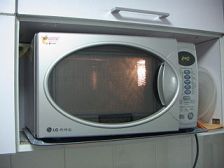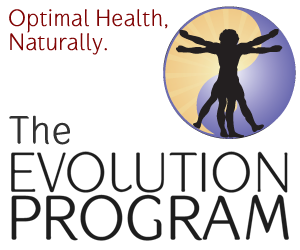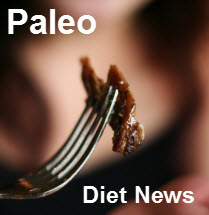The Paleo Diet and Microwave Ovens
A Microwave Oven
 [/capt
[/capt
ion]
I’m the owner of a group on Facebook, geared towards the in depth scientific discussion of all things related to the Paleo Diet, called “Paleo Geeks Anonymous”. We talk about a lot of things, some of which are worth mentioning here, while others are not. Yesterday, one of the members asked the group whether or not we believe microwave ovens to be “Paleo” or not.
Realistically, we’re talking about whether or not microwaves are conveniently disguised agents of death and disease, because we know for a fact that Paleolithic people didn’t have them…..obviously. So if we are to decide whether or not they are “Paleo” means determining whether or not their usage effects our health.
Paleolithic people would have used mainly fire to cook their food, but we know that cooking at high temperatures over fire, actually has it’s own set of potential health problems, mainly in the tendency for the production of Nitrosamines. So then, the question is, “are microwaves more or less dangerous than cooking over an open flame?”. Does Microwave radiation convert the molecules in our food into microscopic ninja assassins?
The Paleo Diet and Microwave Ovens
First, let’s look at the evidence that shows that Microwaves are “dangerous”:
Well……hmmm……this is embarrassing. I can’t seem to…….oh Wait, here’s one! No…..that’s no good either……
It appears that there IS NO scientific evidence to support any negative effects from heating food with a microwave oven.
Sure, some people don’t like the taste of microwaved food, and they certainly heat unevenly, but that’s about the thick of it.
Okay, so how about the evidence that shows microwaves are safe?:
Once again, any search for credible scholarly sources for this, basically comes up sorely lacking. The problem is that scientists actually don’t really know one hundred percent HOW microwaves work. Apparently, the cooking effect was stumbled-upon accidentally.
Here’s an interesting piece I found on the subject though:
“It’s a fact of life that any type of cooking changes the chemistry of food. It can reduce the levels of some nutrients, just as it can increase the levels of others (e.g. lycopenes), or make them more or less available to the body for use. (Raw food anyone?) The prevailing view is that microwaves do not alter foods in ways that are any more deleterious or harmful than other types of cooking. In fact, some have argued that the faster cooking time may actually preserve more nutrients versus other methods.
Still, we know sufficiently little about nutrition and the cumulative effects of food science that some aren’t so convinced (of course, there is also the threat of any harmful substances present getting released upon cooking, such as the diacetyl blamed for “popcorn lung.”) In a recent article E Magazine pointed out that popular holistic health expert Dr. Andrew Weil has written, “There may be dangers associated with microwaving food… there is a question as to whether microwaving alters protein chemistry in ways that might be harmful.” According to the magazine, Dr. Fumio Watanabe of Japan’s Kochi Women’s University found that heating samples for six minutes degenerated 30 to 40% of the milk’s vitamin B12. This kind of breakdown took about 25 minutes
of boiling with conventional heat. In a 1992 Stanford Medical School study often cited by microwave opponents, researchers reported a “marked decrease” in immune-boosting factors in microwaved human breast milk. In the late 1980s Swiss scientists reported decreases in hemoglobin and white blood cells in rats that had eaten microwaved food.
It’s also much reported on the Internet that microwaving human blood renders it unsafe for transfusion — though medical professionals point out that rapidly heating blood via any method can have the same negative result.
The conclusion made by government agencies and mainstream organizations is that microwaved food is safe, as well as convenient. There’s a limited number of studies that may suggest otherwise, but given the lack of large-scale or compelling evidence it’s hard to feel that tossing our your microwave is a particularly smart step. Everyone interviewed for this piece pointed to other issues as more pressing, from ubiquitous exposure to cell phones to more serious threats from radon, or bigger energy users like heating and cooling. That doesn’t mean microwaves aren’t worth thinking about, however.” - The Daily Green
Well, I’m going to continue using my microwave, because it’s convenient for me to prepare my daily meals ahead of time, and heat them up at work. Heck, I’ve even joked with my wife that we
could use two microwaves in the kitchen! But, as per usual, it’s your choice. I think that the Paleo diet and microwave ovens, go together just fine.
-
If you found “The Paleo Diet and Microwave Ovens” useful, please click the ‘LIKE’ button below to share on Facebook. We also invite you to leave comments, and join the Paleo Diet News discussion!
Go to www.undergroundnutritionist.com, and download my 30-Day UN-Challenge eBook now……It’s a step-by-step guide to your personal health revolution.
Barry Cripps is a Paleo-based, Certified Nutrition and Wellness Consultant, who operates out of Bowling Green, Kentucky.
For more information please visit: www.undergroundnutritionist.com






Nice article, Barry!
It’s not quite true to say that we don’t know exactly how microwave cooking works, however.
The water molecule is shaped like a V, with the oxygen atom at its apex, and the two hydrogens at the end of the slanting lines. Those slanting lines are the covalent bonds, and they have a resonant frequency (like a stretched spring).
The resonant frequency is 4.2 GHz, which is exactly the frequency to which the magnetron in a microwave oven is tuned. When energy is pushed in at this frequency, the hydrogen atoms begin to oscillate to and fro, absorbing the energy. Because of friction with adjacent molecules, this energy is gradually transferred to them, creating a uniform increase in molecular movement, which we detect as a rise in temperature.
Because of the absorption, the microwaves can only penetrate the outermost 2 cm or so of the food (depending on its density and water content). This is the reason for the uneven heating… liquids can smooth out their temperatures by convection, whereas semi-liquids (e.g. stews) have to be stirred and heated in bursts, and solids have to be allowed to sit, sometimes for a surprisingly long time, for the heat to spread by conduction.
Incidentally, the choice of the frequency also explains why interference with domestic wifi networks sometimes occurs.
Funny, I used the microwave yesterday to defrost my locally grown grass fed beef. Ground beef to be exact, then I cooked it on the Bar B Que. Ymmm
The people who work in developing countries say that “fires” and the resulting smoke is a big cause of disease, esp. when the fires are in huts. Smoke inhalation is just plain Not A Good Thing. Yet it’s certainly “paleo”, been used for centuries, and we seem to have a built-in desire for smoked food and a nice bbq.
So just because a thing is “old” doesn’t mean it’s healthy. And just because it’s new, doesn’t mean it’s necessarily unhealthy. I basically agree on microwaves … from a culinary standpoint they are not a great cooking technique, but in the decades since they’ve been in use, there isn’t really much evidence that they do anything bad.
A similar situation exists with coffee. Coffee has been considered “bad” for a very long time, but there isn’t actually evidence that it does anything much bad, except give you the jitters, which I guess you know if you drink coffee. Coffee, and chocolate, both have good health effects too. And while “paleo” people might not have had those two plants, they had a wider range of plants that they used than we do, many of which had pharmaceutical effects. Actually one botanist, studying one culture, said some 200 different plant species were consumed regularly.